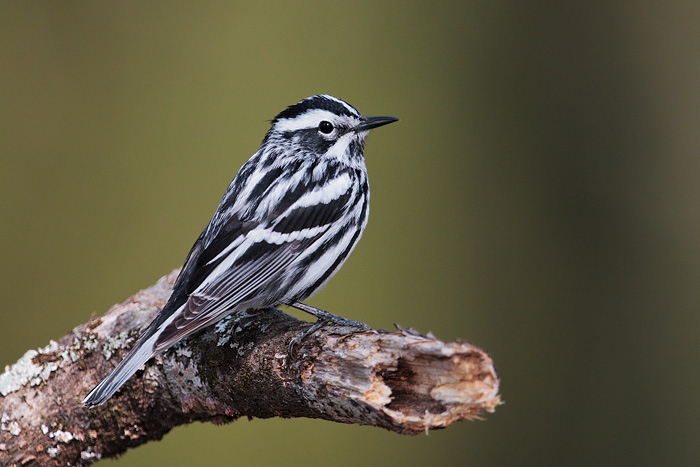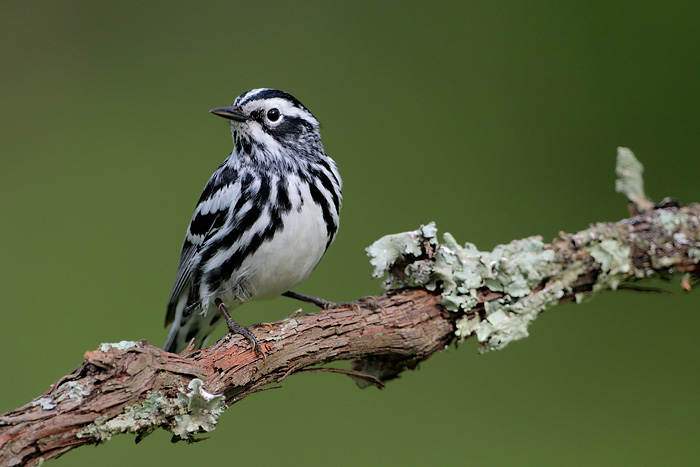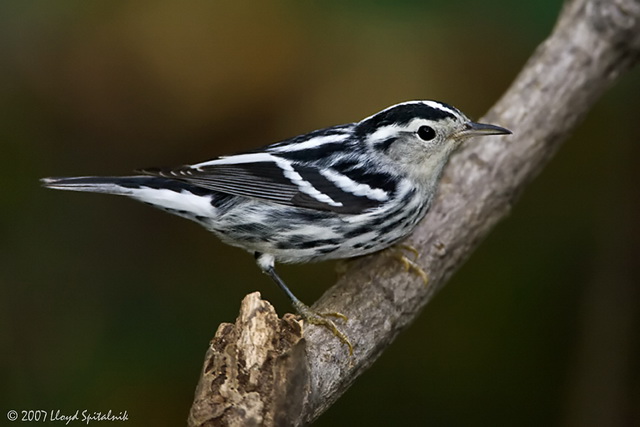
Mniotilta varia
SUBFAMILY
Parulinae
TAXONOMY
Mniotilta varia Linnaeus, 1766, Hispaniola.
OTHER COMMON NAMES
English: Black-and-white nuthatch; French: Paruline noir et
blanc; German: Kletterwaldsдnger; Spanish: Reinita Trepadora.
PHYSICAL CHARACTERISTICS
4.5–5.5 in (11.4–14 cm). The only bird in its genus, it is an
abundantly striped black-and-white bird. Males have a black
bib; females do not. The rear toe and claw are unusually long,
and ideal for its creeper-like habits.
DISTRIBUTION
Breeds from the southern and central United States and far
north into western Canada. Winters from the far southern
Gulf states to the northern reaches of South America.
HABITAT
Coniferous or deciduous forests, particularly common in more
northern areas.
BEHAVIOR
It has a soft, often-repeated “wee-ee” song. It pecks its food
out of clefts in the bark of trees, which it searches carefully,
usually by working over one tree trunk after another from near
the ground by creeping upwards, much as nuthatches (Sitta
spp.) do.
FEEDING ECOLOGY AND DIET
Mainly arthropods.
REPRODUCTIVE BIOLOGY
It is one of the earliest wood warblers to return to North
America in the spring. It builds its nest of strips of bark,
moss, grass, and other materials, behind a piece of bark on
the lower part of a tree trunk or more frequently on the
ground beneath a tree where it covers it partly with leaves.
Produces four to five speckled eggs, which hatch in a week
and a half.
CONSERVATION STATUS
Not threatened. Widespread and common in northern North
America.
SIGNIFICANCE TO HUMANS
None known.
Other popular Animals
Photo Gallery of - Black-and-white warbler




 Animalia Life
Animalia Life